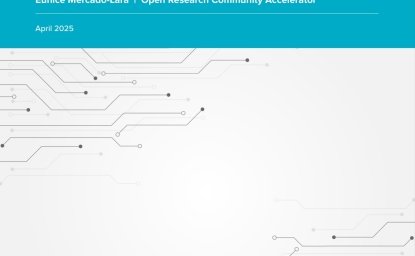I still remember the ridicule I faced the first time I called for having the satellite internet service, Starlink, in Yemen in a tweet in July 2020. People laughed.
At the time, I was desperate for solutions to overcome the appalling internet service Yemenis had. A few months later, I implemented the first citizen’s dialogue on the future of the internet in Yemen with the Peace School Foundation as part of the global We The Internet project, an initiative of Missions Publiques. We put Yemen on the world’s digital map, giving a voice to the women and men who were yearning to be connected.
The following year, teaming up with likeminded professionals, the Connecting Yemen initiative was launched. Connecting Yemen is an independent non-profit initiative seeking to catalyze widespread access across Yemen for effective and affordable communications technology.
Boosting speeds
In addition to having the worst humanitarian crisis of the century, Yemen also has one of the worst and most expensive internet services in the world. As of early 2023, there were around 20 million active cellular mobile connections. If each person had only one account, this would mean that around 58 percent of the population is connected. However, the disconnected population is likely much higher given that many Yemenis have more than one account.
Furthermore, the internet connection provided by mobile companies is expensive and unreliable. In May 2023, Yemen had the slowest mobile network internet in the world at 3.98 Mbps, according to SpeedTest Global Index for mobile networks, 7 points slower than the Syria and 10 points slower than Libya—two war zones in the region—and 91 points slower Saudi Arabia next door (which enjoys a download speed of 95.44 Mbps).
Moreover, the monopoly over internet by mobile companies makes prices extremely high, especially compared to the quality of service.
This is sadly the case due the lack of infrastructure such as fiber optic cables connecting Yemen internally and to undersea cables globally. Connectivity for most of the country currently comes through the ageing FALCON cable, which was installed in 2006. When it was temporarily damaged on January 9, 2020, after being snagged by a ship’s anchor in Egypt, there was a nationwide outage for weeks until it was repaired. There was another outage in August 2020, and it was damaged in Hodeida in July 2018 by the Houthis while digging fortifications. Moreover, the monopoly over internet by mobile companies makes prices extremely high, especially compared to the quality of service.
Finding an alternative
As part of our advocacy, in May 2021 I reached out to SpaceX and contacted their Market Access Director, who was responsible for bringing the technology to new countries. This was a difficult process, as I had to go back and forth between the Yemeni government, the Minister of Telecommunications, the Public Telecommunications Corporation (PTC), and SpaceX, who were insistent—and rightly so—on maintaining their democratic access of internet model.
After nearly two years of negotiations, an agreement was finally signed to pilot the service through a trial period in Aden, and the early results were astonishing! From as low as 12 Mbps upload speed, with Starlink service, we reached up to 142 Mbps. According to Wael Tarmoom, the director of the PTC, we are expecting to roll out the service in other locations once a full license has been signed, and he has worked with the relevant authorities to prepare the legal, security, and technical environments to make this a reality.
Having affordable and reliable internet access would mean that those 11 million children could continue to learn.
This huge leap will have direct and indirect impacts on the economy, education, activism, civil society, and even personal and social wellbeing. For example, students can continue their education online, whether disrupted by the war, mobility barriers or even environmental concerns such as the pandemic. According to the 2023 Humanitarian Response Plan report by the Education Cluster, out of a total of 10.8 million school-age children, there are 2.7 million children not attending school and almost 8.6 million girls and boys need education in emergencies support. Having affordable and reliable internet access would mean that those 11 million children could continue to learn.
High-cost barriers
The deal, however, is not final and there are many risks ahead. There is a long way to go from introducing the service as a pilot in one city in a few government-based locations, to having it readily available for any citizen who can afford it nationwide.
So far, the deal the PTC has signed is a provisional three-month testing period intended to iron out the technical and logistical details before agreeing on the commercial package. We are yet to see how this service will be provided to the public, at what price, and the risks to those who want to use the service in the Houthi controlled areas. Now that wind of this deal has reached the authorities in Sana’a, they issued a warning to anyone under their jurisdiction should they acquire the service: they will be punished and the equipment will be confiscated.
The advantage of having a service like Starlink is that it does not require local infrastructure and can be delivered directly to households. As the Yemeni government has agreed on the terms of the deal, access for all should be a given. Once the set-up dish and equipment are installed at the end user’s location, it becomes a matter of routine payments to ensure continued service. But here lies the second problem.
Starlink’s standard price starts at $100 USD per month, in addition to the $500 one time set up costs. Even so, it is on average six times cheaper (and much faster) than other satellite internet providers available now in Yemen such as VSAT and YahClick, which provide much more limited bandwidth and millions of Yemenis cannot afford the set up and monthly costs. Broadband internet would be much cheaper. However, this is not currently an option given the extensive infrastructure required and the country’s instability.
While relief organizations are doing their best to provide necessities, internet access may not be an option for most households. And this is where digital rights advocacy comes in.
Yemenis cannot wait for infrastructure to catch up. Therefore, many companies and well-off families have already invested greatly in the available satellite internet just to be connected. But more than half of the population is living under $2 per day and 60 percent are suffering from food insecurity. While Starlink’s economic package provides a better alternative, it is still unaffordable for most Yemenis. The United Nations Broadband Commission recommends pricing affordable broadband at 2 percent of Growth National Income per capita, which would require an impossibly $6.02 per month (Yemen’s GNI per capita was $301 in 2021). While relief organizations are doing their best to provide necessities, internet access may not be an option for most households. And this is where digital rights advocacy comes in.
Spreading access
Last year, I connected with the Internet Society Chapter in Yemen to learn more about the first community network project that the chapter is piloting in Mukalla in the province of Hadramout. I first heard about this initiative during a webcast hosted by the Wilson Center on Digital Transformation in MENA. The idea was to have a local organization provide public WiFi service to a small community, connecting those who would not otherwise have it.
Community networks give access to underserved areas using infrastructure that is developed, maintained, and used by local communities, frequently in locations that are commercially undesirable for major internet service providers. This is a low cost way of connecting the unconnected and one of the main priority areas of the Internet Society worldwide.
The Yemen chapter has done this before in some schools in Sana’a and Aden, but sustainability was always a problem. According to Sharaf Azzain, president of Internet Society Yemen Chapter, the community network in Mukalla will provide the service for a nominal fee that will cover the costs of running the project.
However, given the poor fiber infrastructure in Yemen, providing service that the target 1,500 residents might have saturated the network, causing it to break down. There have also been challenges in terms of getting the relevant licenses and installation processes for the fiber connection and bureaucratic barriers to importing equipment. The project implementer in Mukalla is currently setting up the station and connection logistics in advance of rolling out the service in the coming months. However, the question of sustainability depends on generating sufficient income to cover the costs and keep the service running.
Starlink can be deployed and shared cheaply through a community network—all without requiring expensive equipment and infrastructure to connect the national fiber infrastructure.
Now, with Starlink in the picture, such a project will become much more effective and could be easily replicated in remote areas, Internally Displaced Person’s camps, and poor neighborhoods. Starlink can be deployed and shared cheaply through a community network—all without requiring expensive equipment and infrastructure to connect the national fiber infrastructure.
Yemen needs to connect
A reliable and affordable internet connection is the single most important goal to impact the lives of ordinary Yemenis. It would provide income opportunities and access to markets to many talented and professional Yemeni youth who cannot travel abroad. It would also create spaces for creative industries such as arts and media, in addition for access to information for many more.
Internet can also be used to support transparent and far-reaching humanitarian aid through electronic vouchers and mobile money services. For those millions who join the frontlines due to desperation, economic opportunities that the internet brings may provide more attractive alternatives. This is the cause to get behind for sustainable economic growth in Yemen—the one that can unite all Yemenis.
The views expressed in these articles are those of the author and do not reflect an official position of the Wilson Center.






